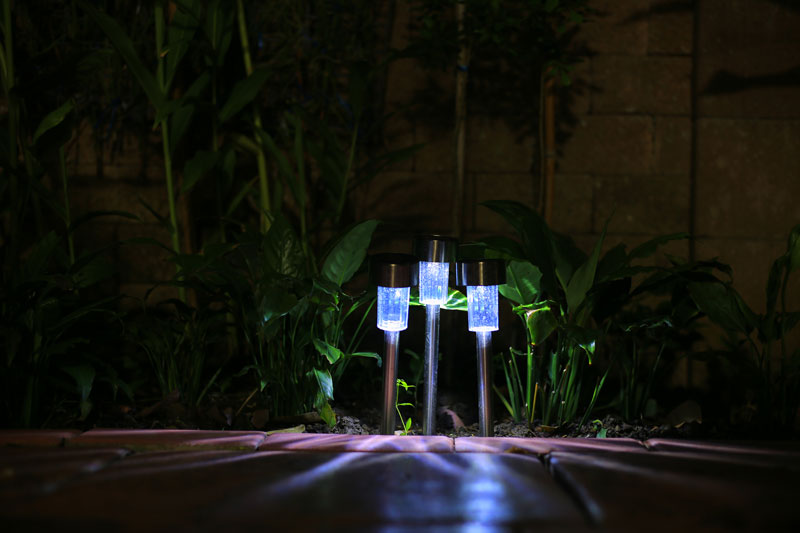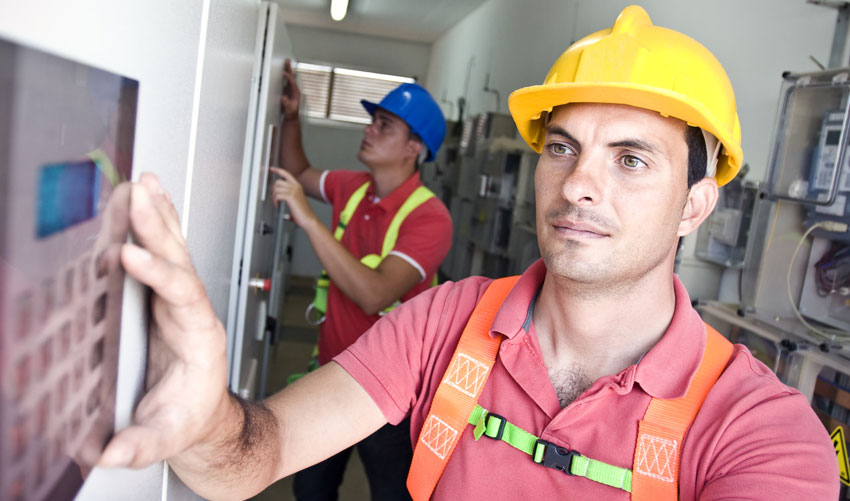Solar is a great environmentally-friendly option for powering your solar camping lanterns, and outdoor (or indoor) solar lamps. But what about charging on cloudy days, or even other methods of charging these lamps in a pinch?
You’ll be happy to know small solar lights can be charged in other ways than the sun! They are less efficient and less quick, but they will help you achieve a full solar battery.
But before we get into these methods, we need to take a look into how solar power works, and why these methods can help charge your solar lights in a pinch.
Do not worry! Although solar power sounds complicated, it’s not that bad.
Solar power (or photovoltaic power) works by collecting energy from the sun’s rays and turning it into electricity at a level that can be harnessed by our devices and lamps.
The solar panels themselves are made up of two layers of silicon that are pressed together, sandwich style. The top layer contains phosphorus which gives it a positive electrical charge, and the bottom layer has boron which gives it a negative electrical charge.
Positive and negative charges simply mean a surplus of electrons (positive) or a deficit of electrons (negative). Electrons are the smallest parts of atoms and are the parts of molecules that hold electric charges.
The top layer (positive) is the layer exposed to the sunlight (or any light) which has tiny energized particles in it called “photons.” These photons beam onto the panels and act like tiny hammers to knock the extra electrons from the positive phosphorus layer.
The electrons are now “excited” and quickly start to travel to the electron-deficient, negative side to create a balance between the two sides.
The law of attraction tells us this happens due to opposite electrical (or magnetic) charges being attracted to the opposite charge. These charges are “polar opposites” meaning positively charged molecules attract negatively charged molecules and vice versa.
Capturing, Storing, and Using the Electricity from Solar Panels
However, as these electrons bounce and travel they are captured by conductive wiring in the solar system which sends them into a battery to be inverted, stored, and used as electricity later.
Inverters in the systems change the current of the electrons from direct current (DC) to alternating current (AC) meaning that the electrons alternate the direction they “run” to. This is the energy that will light the lamps later.
Solar systems also have sensors that let them know the brightness of the light outside. When the light is very bright during the daytime or if a light is shining on the solar panel, the solar lights themselves are turned off, but the panels and all the technology explained above are still working to harness the light to use as power.
However, when the light outside of the panel falls below a certain level the lamps turn on, and the energy stored in the battery is pulled out to power the lights.This explanation is very rudimentary, and there are many more factors that are involved in this process, but this should suffice for our purposes.
Is it Possible to Charge Solar Lights Without the Sun?
It is completely possible to charge solar lights without the sun! It is important to clarify, however, that rooftop solar panels and solar lights are different fixtures, and these methods are for use with smaller solar lights, such as lanterns or lamps.

These methods are to help charge solar lights while they are not in direct sunlight and are not nearly as efficient and easy as direct sunlight, but they will work in a pinch to get power back into the battery.
Method #1: Charging With Artificial Light
Artificial light is much weaker than solar light, so while it may take a bit longer to charge your solar light, it will get the job done.
For this method, simply take the lamp or fixture to an incandescent or LED light bulb and place it with the panel facing the light from the light source.
Keep the solar light in that position for a while and the solar light’s battery will charge. The battery on your light will get filled but it takes longer to hit that peak than with direct sunlight.
The light coming from either an incandescent or an LED will work with a solar-powered light, since both LED and incandescent lights emit photons just as the sun does, and will knock the electrons loose in the same way that natural light does.
Method #2: Indirect Sunlight
Although bright direct sunlight is the best option for solar lights, indirect sunlight works too.
Make sure that your solar light is not in complete darkness, because it will not charge in darkness. There MUST be a source of light or some light being shed for this to work.
Cloud cover or fog can sometimes be too thick for the sunbeams to fully penetrate, and shade is not a viable option, so try to find the spot with the most light.
The photons that were present in the direct sunlight are still present in the indirect sun, but in a lower quantity than the direct sun.
This means your solar lights will charge in indirect sunlight just at a slower rate since there are fewer photons knocking the electrons in the silicon loose, so there is less energy to be captured every second.
The energy will still be stored in the battery and the battery can still get filled up, it will just take longer to reach that point than with full light.
Method #3: Alternative Charging
Many solar lights (both indoor and outdoor) have alternative charging methods other than sunlight or other light.
Some will have a place on the fixture to insert batteries as back-up power but most will also have a way to charge the lights without using a back-up power supply.
Most solar lights will come with a charging cord, whether that be a USB or a wall outlet. Modern solar lights typically have the option to plug them in to charge in case they need to be charged quickly and efficiently.
Of course, this method does take away the environmentally-friendly aspect of solar lights that most people want when they purchase these kinds of fixtures, but in a pinch, they can be charged quickly with less wait time than the other methods listed above.
Final Summary
There is a misconception that solar lights only work with full, bright sunlight but that is simply not the case. All of these methods can work to give your lights the charge they need to shine.
To reiterate once again, these methods are NOT viable alternative methods for charging rooftop solar panels or larger solar energy generators. These methods are strictly for lanterns, small lights, and small lamps that use the energy they harness in the lightbulbs they come with.
Any of these methods will work. It is your choice to pick the one you feel will work best for your solar lights and situation.
Some people will not use the charger cords since they do not want to use “on the grid” methods and will prefer the other ways but for you, charging cords may be a perfect choice.
So let these methods illuminate your solar light charging choices whenever the sun doesn’t want to cooperate.
Happy charging!




